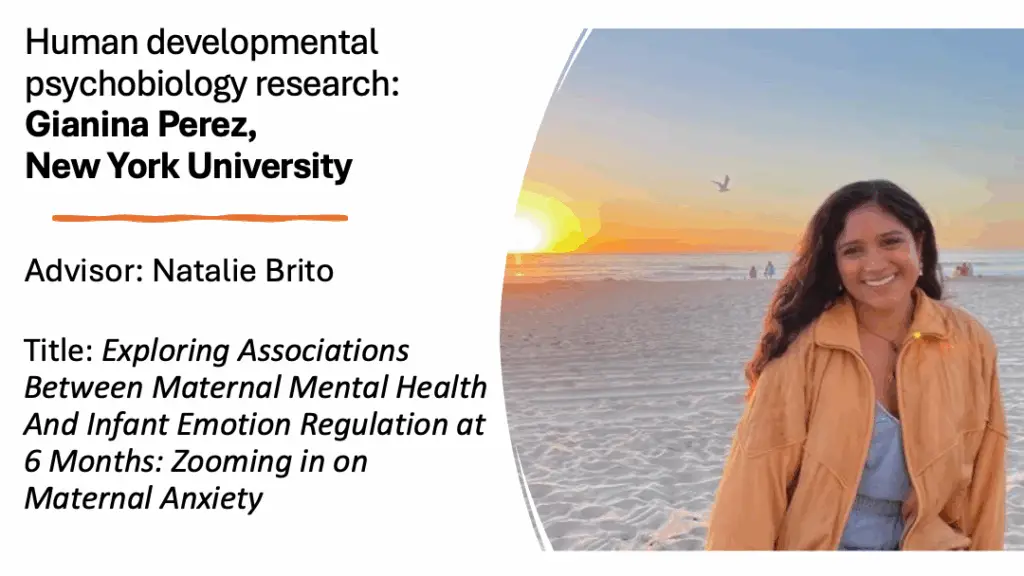EXPLORING ASSOCIATIONS BETWEEN MATERNAL MENTAL HEALTH AND INFANT EMOTION REGULATION AT 6 MONTHS: ZOOMING IN ON MATERNAL ANXIETY
Abstract Body
Maternal stress and depression during the perinatal period are associated with infant emotion regulation (Madigan et al., 2018; Provenzi et al., 2021). Emotion regulation refers to an infant’s ability to cope with positive and negative emotions through self-regulatory capacities and communicative behaviors, with the purpose of adapting to their environment (Kopp,1989). Past work has found that while postpartum maternal anxiety is more prevalent during the perinatal period, its impact on maternal and infant outcomes is less understood (Zappas et al., 2021). Ninety-nine 6-month-olds and their mothers were tested to investigate the impact of maternal postpartum depression and anxiety on infant emotion regulation. Dyads participated in the Arm Restraint Task (Planalp et al., 2017) as a measure of infant emotion regulation. Mothers completed the Edinburgh Postnatal Depression Scale (10-item composite score) (EPDS: Cox et a.,1987), which was broken up into subscales for depression (7-item) and anxiety (3-item). The EPDS composite score was negatively associated with infant avoidance behaviors during arm restraint (B= -0.06, p= 0.004). However, when examining the subscales, only maternal anxiety was negatively associated with infant avoidance behaviors (B= -0.148, p=0.0003). Infants of mothers with higher reported anxiety symptoms exhibited less avoidance behaviors during arm restraint and these findings suggest that postpartum anxiety at subclinical levels could potentially increase dyadic synchrony (Lemus, Vogel et al., 2022) and sensitivity to infant cues (Beebe et al., 2011), resulting in higher levels of emotion regulation.


